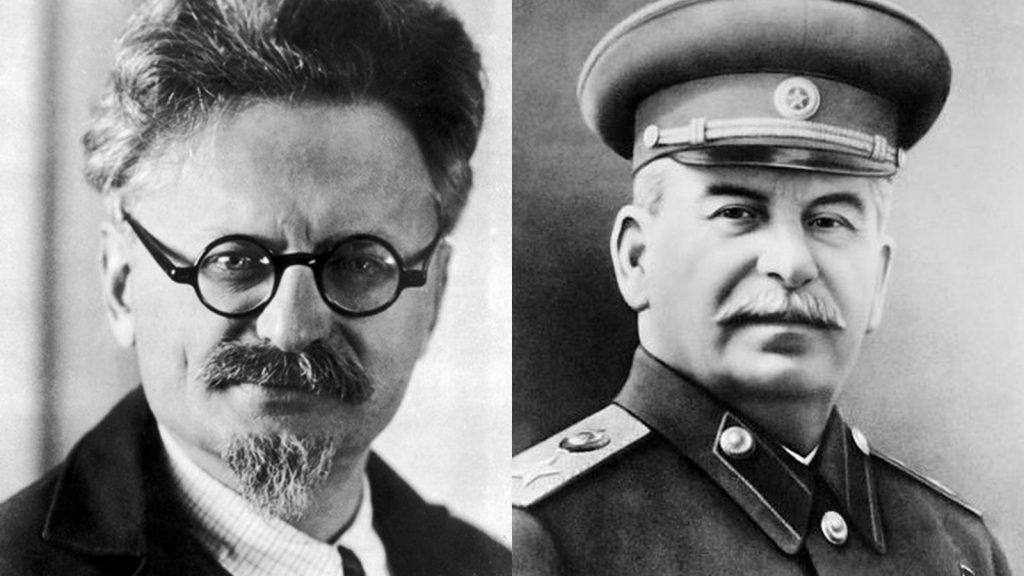
The year 1927 lacked many important international events. U.S. Marines again invaded Nicaragua to protect vested U.S interests but this invasion raised hardly an eyebrow in the international community. Another event, the significance of which was far more important (but did not seem so at the time) was Stalin’s purge of Leon Trotsky from leadership of the Communist party in Russia. Trotsky, while a revolutionary, was less ruthless and seemingly more stable than Joseph Stalin. History could well have been altered dramatically had Trotsky been victorious in the power struggle for control of Russia’s Communist party. Trotsky had to flee the country but could not hide forever from Stalin’s assassins and he was eventually tracked down and murdered with an ice pick in Mexico City years later. Most of his family suffered a similar fate.
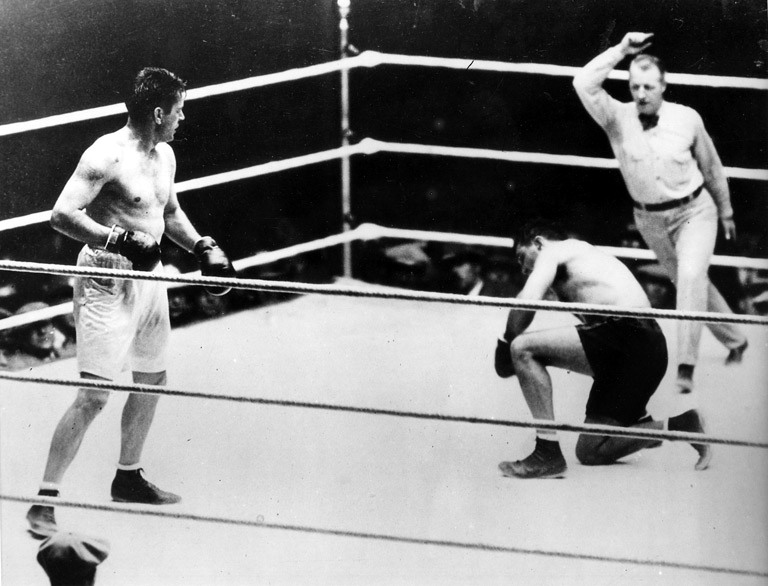
By contrast, 1927 was a reasonably eventful and exciting year in America. In sports Gene Tunney beat Jack Dempsey for the heavyweight title in a much anticipated bout which was dubbed in boxing lore “The Long Count”. Local sports fans waited with great expectation to see a film of the fight and on October 11th, 1927, the fight was shown at the movie theater in St. Stephen. People from all over the county were in attendance including a large contingent of Eastporters. To keep the event in context one must remember that Prohibition was the law of the land in the U.S. but not in St. Stephen and this may explain the fate of Eastport contingent on their return trip to Eastport. The misadventure was documented in the St. Croix Courier.
St. Croix Courier
October 13, 1927
Seven Cars Crash Near Eastport.
Eastport Maine
The excitement of witnessing the showing of the Dempsey-Tunney championship fight pictures at St. Stephen last night, apparently had a disturbing effect upon many of the drivers of Eastport cars that made the 60-mile round trip to the upriver Canadian city as no less than seven local cars came to grief on the way home, all but two escaping with slight damage while considerable damage was done to the sedans of Samuel Matthews and Ralph Vose.
Matthews’s car became unmanageable in the heavy gravel at the foot of Rice’s Hill, about three miles from the Main Street of the city and left the road and turned over. Matthews and his party of guests returning from the fight pictures were unhurt. Later in the evening the sedan of Ralph Vose, who was accompanied by Raymond McPhee, also of Eastport, was crowded over the edge of a high bank on the dangerous curve in McCoy woods a couple of miles from town, by a larger car that tore past the Vose car at a clip estimated to have been in excess of 50 miles per hour. A telephone pole was all that saved the car from plunging down a steep 50 foot bank to the rocky beach below. Neither of the occupants was injured in the accident.
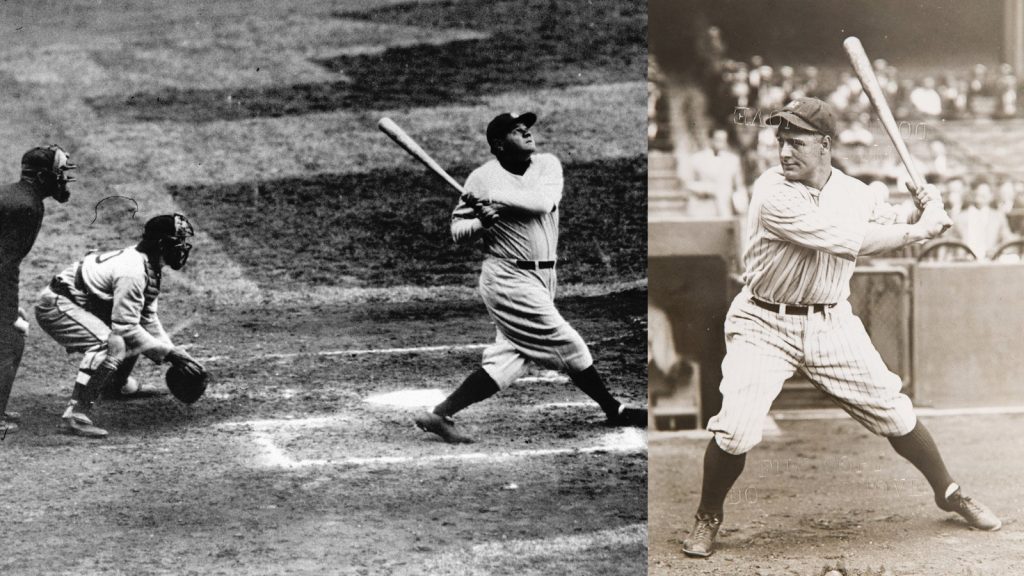
Babe Ruth hit 60 home runs in 1927 for a Yankee team generally considered the best to ever take the field, but his teammate Lou Gehrig won the MVP because Ruth, under the rules of the day, was ineligible, having won the award previously.
Henry Ford discontinued building Model T’s after number 15 million rolled off his famous assembly line but barely survived the year when he was nearly killed in an auto accident. While driving near Detroit a vehicle approached Ford’s car from the rear and as it passed sideswiped his car and Ford’s vehicle “with its namesake inside rolled over three or four times and came to rest against a tree, while the other fellow went on his way without stopping, in the usual manner of road hogs.” Ford was rushed to the Henry Ford Hospital for repairs. The newspaper report goes on to say “The incident is so perfect it might have been planned by Ford’s own publicity department. It includes everything: the democratic habit of the world’s richest man driving his own “small car”, the car’s ability to roll over several times without serious consequence to its passenger, and the incidental mention of the hospital which bears the great man’s name. What more could a press agent ask?”
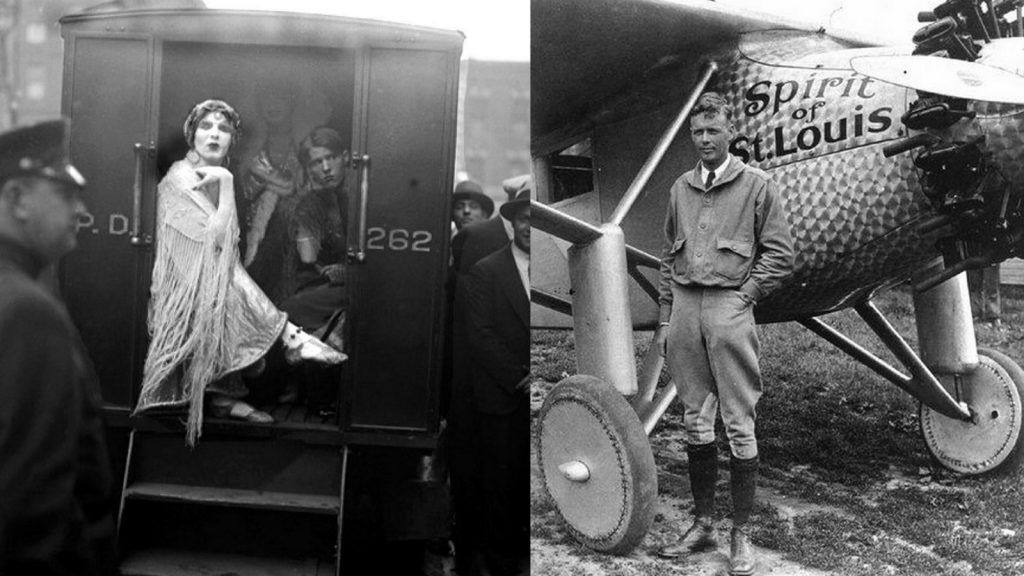
Two Americans who achieved a good deal of fame in 1927 were Charles Lindbergh and Mae West. Lindbergh of course completed the first transatlantic flight-New York to Paris- in 1927 and Mae West was arrested in 1927 on obscenity charges for the salacious role she played in the play “Sex” performed in in New York City. Virtually unknown before her arrest she skyrocketed to fame and fortune and at a cost of a mere 8 days in the city jail, a fair price by any standards. Lindy became the most famous man in America and perhaps the world.
At issue is whether he deserved the honor. Two weeks before Lindbergh’s flight two French flyers, Nungesser and Coli, took off from Paris in the O’iseau Blanc, the White Bird, flying west to New York. What happened to them remains a mystery to this day but subsequent investigations, including some sanctioned by the French government, suggest the plane may have crashed near Round Lake in Wesley which would mean, of course, that Lindbergh was the second flyer to complete a transatlantic flight although the first to survive the journey. Local and national search parties have scoured the Round Lake area over the years to no avail. As late as the 1980s search parties, including some of Nungesser relatives, have scoured the area, once using a French helicopter equipped with infrared radar. A large bone fragment was found thought to be part of a human shoulder but forensic examination established it was, not surprisingly, from a moose. To be frank the “Round Lake” theory has little to support it.
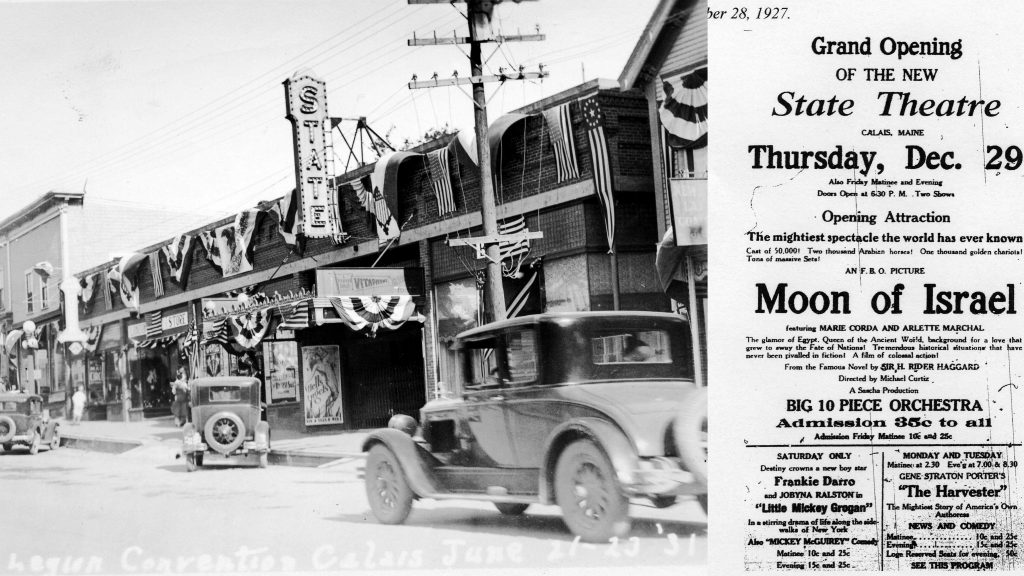
In 1927 the Unobskey family built the State Theatre on Main Street in Calais. It opened December 29, 1927, and until it burned 30 years later it was the entertainment center of the St. Croix Valley. Movies, plays, national entertainment of every variety, fashion shows and many local productions found their way onto the stage at the State Theatre.
The Courier reported the opening as follows:
December 29 1927:
The State Theatre Opens Tonight
With the formal opening of the new State Theatre in Calais this evening, this community of four border towns will enjoy the privilege of having for its use one of the largest and most magnificently appointed play and pictures houses in the State of Maine.
The erection of this house is due entirely to the initiative of the firm of J. Unobskey and sons, one of the most enterprising firms in Calais, and was erected with the idea of it being a profitable investment as a second consideration. The Unobskey firm, composed of Mrs. Joseph Unobskey, her enterprising sons Arthur, Charles, and Dr. William Unobskey, now practicing in New York, have long had the idea of giving Calais a first-class theatre. They believe that, in addition to its being an indirect advertisement for the ladies and gentlemen’s clothing business, it will be a direct means of bringing more people to Calais from nearby points in Maine and will thereby increase the importance of the entire city.
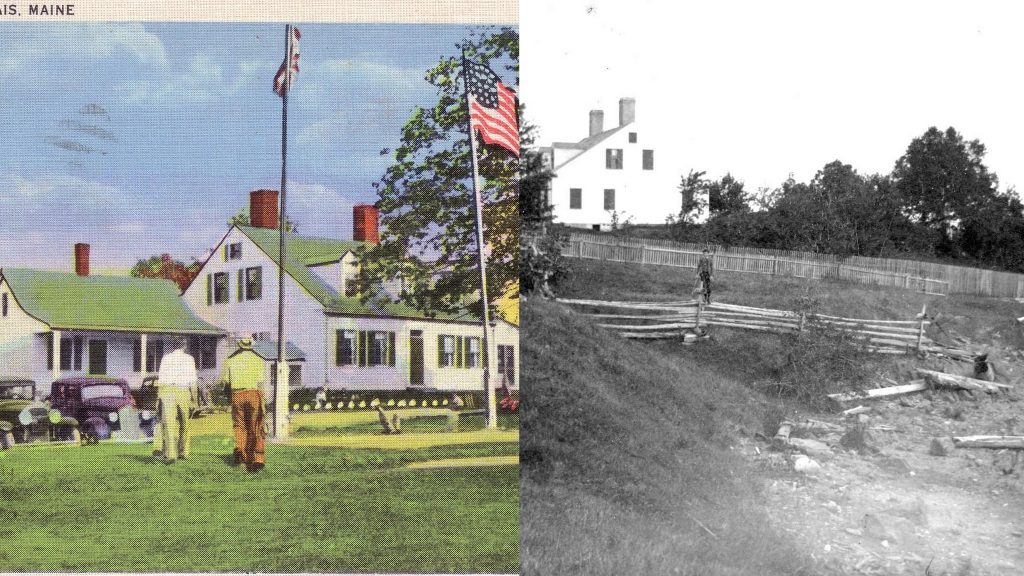
1927 was an important year for the many golfers in the St. Croix Valley-golfing enthusiasts from the four border towns met in March of 1927 to decide the best location for a St. Croix Valley golf course together and to decide how to fund the construction of a course and clubhouse. After reporting on a meeting of golfing enthusiast from the four border towns, the Courier went on to report:
March 24, 1927
Golf Club Project Almost Assured.
The site selected is the old John Todd farm on the Calais side of the river. The farm is about 75 acres in size, is beautifully situated on the riverbank and is on the streetcar line. It may be purchased for about $6000. And the idea is to have 60 charter members each taking $100 in stock. A sufficient sum could then be raised on mortgage to fit up the present building for a clubhouse and to arrange the course. Mr. Skinner of St. Andrews, who is in charge of the links there has looked over the site and has pronounced it ideal for a nine-hole course.
The original members were virtually a who’s who of the business and professional community. According to the Rand Castile, the club historian “Dancing was not allowed on Sundays in the clubhouse, there was a committee for propaganda, one for tennis and winter sports, and no dogs were allowed on the veranda. We were not allowed to send a house servant outside on errands.” Membership was, however, not limited to men which was the case with most golf clubs of the era. The original membership was comprised of 81 men and 14 women.
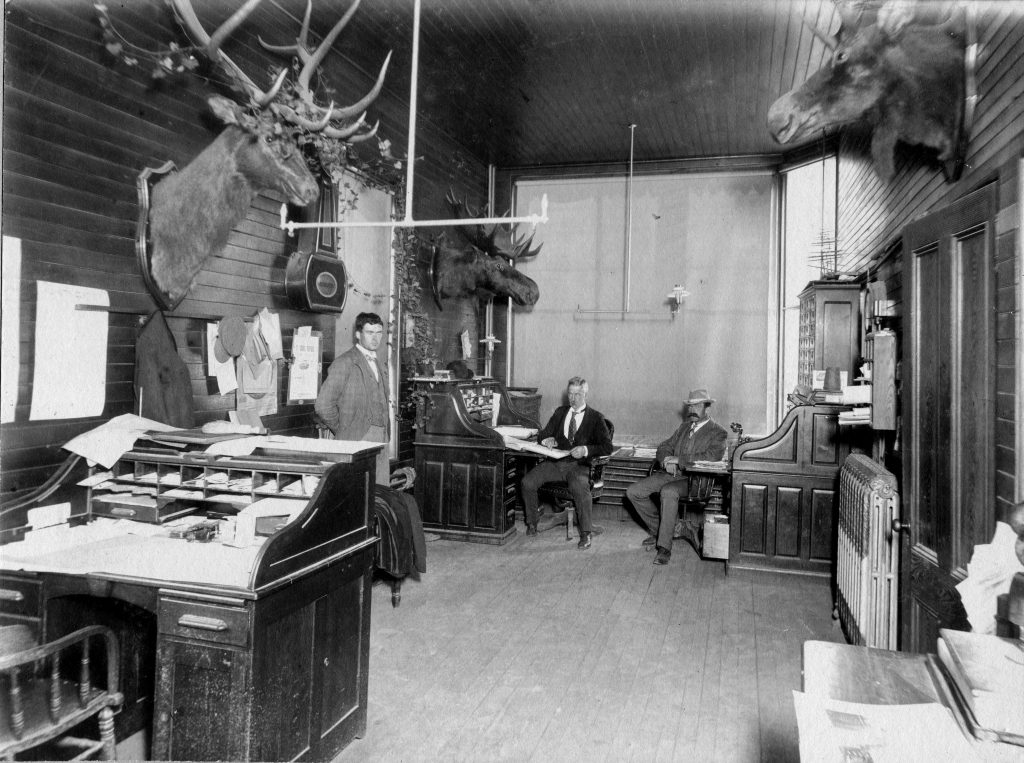
In 1927 the richest people in Calais were probably Henry B. and Emma Eaton. Their fortune was built on lumber and the vast timber holdings of the Eaton families on both sides of the border. The Eaton Land Office at the bottom of Calais Avenue, pictured above, later became the St. Croix Club and is now, after several fires and renovations, the bowling club. Directly behind the office was the Eaton Long Wharf, long since gone but perhaps remembered by some as the site of the Calais dump in the days when everything went into the river, being generously gifted by the citizens of Calais to the folks in Robbinston and Eastport. Emma and Henry sensibly tried to spend as much of their fortune as possible by traveling extensively. For instance, in February 1927 the Montreal Gazette reported they had just returned to the United States after a stay at the Chateau Frontenac and, more sensibly, the Eatons were reported to have arrived at the Roney Plaza hotel in Miami on December 27th, 1927. It seems they traveled in the sort of social circles where their arrivals and departures were considered newsworthy. Try as they might, their travels barely dented the Eaton’s bank accounts and in 1944 when Emma, who survived Henry, died she had an estate of over a million dollars which she left largely to local charities, schools, churches and civic organizations in Calais and Eastern Maine.
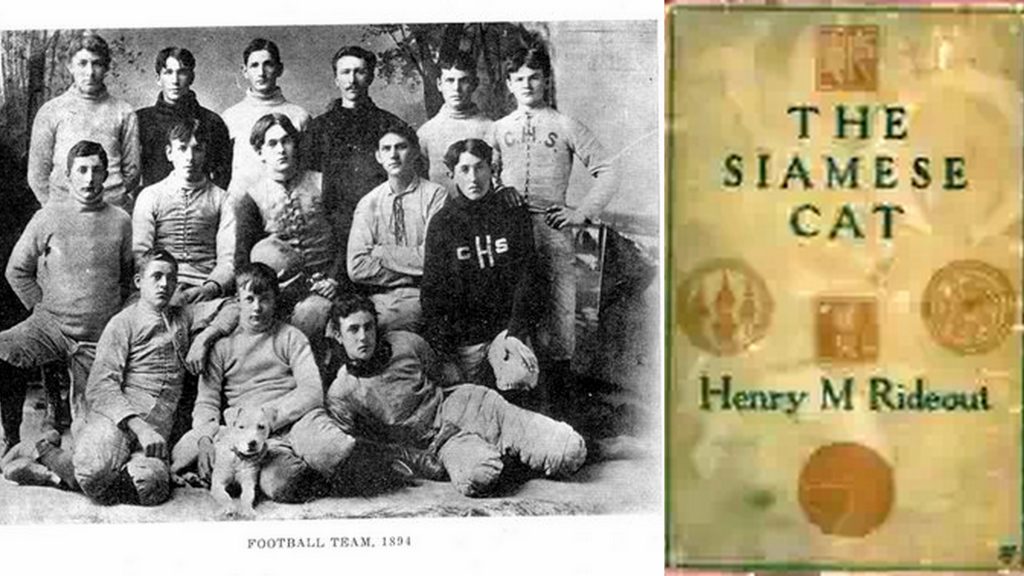
Above is the photo of the Calais Academy football team of 1894. It may surprise many that Calais had a football team in 1894 but high school and club football was a popular school and club sport for many decades at the turn of the century. Henry Rideout, seen holding the ball above, was a star student and athlete at Calais Academy. After leaving Calais he graduated from Harvard and became a popular author. Henry traveled the world for material and background and published the first of his 16 novels in 1907, The Siamese Cat. He also wrote innumerable short stories, novellas and novelettes many of which were published in Atlantic Monthly together with a number of literary textbooks. In September 1927 he sailed from New York bound for Antwerp but died during the voyage. The newspaper reports say he died of paralysis although Wikipedia claims it was pneumonia. Whatever the cause 1927 saw the death of one of Calais’ best known and most accomplished natives.
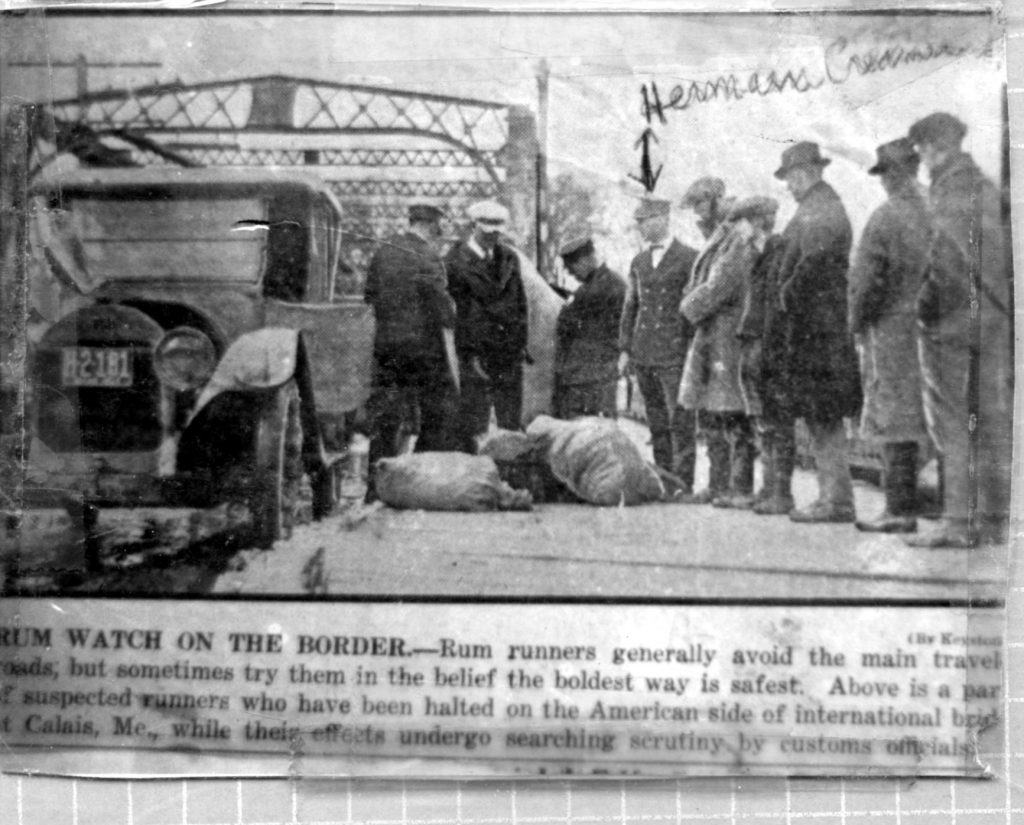
We mentioned above the difficulty the Eastport boxing fans had navigating their way home from St. Stephen, a true den of iniquity, after the Tunney fight. To be truthful it wasn’t all that difficult in 1927 to get a drink or several drinks or even a three gallon container of “Hand Brand” 190 proof Belgium rum in Calais. Louis Morrison’s uncle on Union Street would have been happy to oblige. Still the locals would occasionally make a show of enforcing the law as these articles from 1927 demonstrate:
March 17, 1927:
A Sunday Raid at Woodland
Federal and county officers with search warrants left Calais Sunday morning by automobile and landed in Woodland and before anyone knew what it was all about they were searching for liquor. On the premises of George Poole, a fifty gallon still was found in full operation, also 16 gallons of corn mash and more than a quart of something like corn whiskey. At the establishment of James Tamero after a thorough search the officers collected 15 gallons of beer and some 20 gallons of wine, apparently of considerable alcoholic content. The officers who took part in the raid were, U.S. Customs Patrol Officer Richard Goodere and Sheriff Cummings of Machias and Deputy Sheriff Kelsey of Calais. This is considered to be one of the biggest seizures of its kind made in this locality.
Heavy sentences were imposed upon the alleged violators in the Municipal Court in Calais Monday. George Poole upon whose premises officers testified they found the still in operation, was held on two counts and fined $200 and costs and five months in jail. Thomas Towers, also of Woodland on two counts was fined $300 and six months in jail, having a previous court record.
December 15, 1927, Courier:
Frank Gaddis otherwise known as Beverly Boone of Woodland was held by the U.S. Commissioner Reid on Monday on a charge of smuggling a barrel of beer into this country, gave bail on Tuesday before the commissioner and was released from the Bangor jail for an appearance at the June term of the U.S. District Court in Bangor.
Of course, Messrs. Poole and Gaddis (Boone?) did not have the benefit of a neighbor like Bobbie Kerr, then Calais City Marshall and resident of the Union who usually had advance notice of such raids which, according to Louis Morrison who grew up in the Union in the 1920s, he passed on to friends and relatives.
Other local news in 1927 included the sad but not infrequent drowning of young children and teenagers. The Bangor Daily News reported on April 21st, 1927, that the bodies of Clayton Perkins and Linwood Miner of Alexander were recovered from Meddybemps Lake. Their bodies had been frozen in the ice since their canoe capsized in November of 1926.
St. Stephen residents were notified they had to pay a head tax of $8 and get a passport before crossing to work in the U.S. In addition to the grand opening of the State Theatre in 1927 the Unobskey’s also celebrated the opening of the synagogue on North Street.
Finally, the national press was full of news of the opening of what we now call Route 1 but which in 1927 was the “famed Atlantic Coast Highway”. One article reported as follows:
The famed Atlantic Coastal Highway extending from Calais on the coast of Northern Maine to Key West, Florida, will be opened this Fall according to Fred O. Ward, General Secretary of the South Atlantic Coastal Highway Association. It will be 200 miles shorter than any other route down the coast to Florida and without hills. Most of the route Is open at the present time. This writer has been over the whole of the route from Calais, Maine, to Santiago de Cuba. I have just gone from New York City over the route to Calais, Maine. Two months ago I traversed the entire route from Jacksonville. Florida, to Key West. Prior to that I had made the coastal journey between New York and Jacksonville. The Atlantic Coastal Highway, as now developed, is one of the amazing routes of the globe. Assuredly tens of thousands will follow it South to Florida this Winter, for already there has been a big movement of automobiles to Florida. In summer it will be a favored highway to the New England coast and the pine clad hills, lakes and fjords or Maine.
Certainly, many from the St. Croix Valley did follow it south to Florida every fall and still do, although now they take the Interstate.
